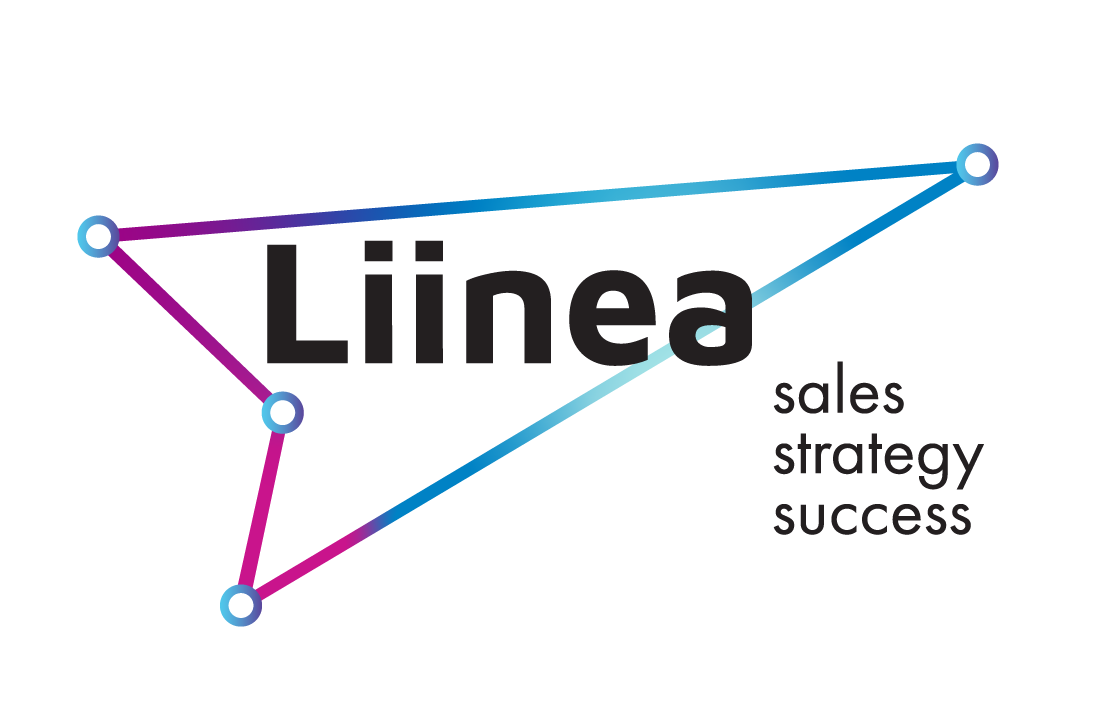Karina Collis
the science behind cold emails that work
PART 2 - Call to action that moves
By Karina Collis, April 2020
Hello again ! In the first part of "The science behind cold emails that work" we talked about how to structure a cold email.
So you spent hours putting together a single cold email to someone who might become your key prospect. You used a referral to build credibility, you personalised your email by congratulating your recipient on his or her recent achievements. You stated a problem you can help solve, you amplified the problem by showing what might happen if your prospect doesn't react now, you also offered a solution to the problem. The email was perfect! You hit the send button and are now waiting for a reply. One hour passes by, two hours, one day, two days…Now it has been a week since you sent your email and you haven't heard back. You are checking your mailbox every hour in the hope of seeing a reply. You feel frustrated, realising that all the time spent was pointless. You wonder what went wrong. You know that if you don't change something in your next cold email, you will never connect to any potential customers. But what did you miss?
What is actually the goal of your cold email? Why are you sending your email in the first place? Isnt it to get to a first call with your prospect or to ask him to do something, for example to download your ebook, sign up for your webinar etc? That one objective can only be achieved if you ask your prospect to do it in the first place. This is the call for action (CTA) that you would usually find in the last line of your email and that you forgot. Did your prospect act on your call for action or not? This is how you will measure your success and your progress on your cold emails.
The most common mistake besides forgetting to include a call for action (yes, it happens too..) is a vague call for action. From my experience, I created a set four rules to create a powerful CTA which I share below. Further down, you will also find examples of proposed CTAs that you can copy/paste into your emails, to help you save time on writing.
Four simple rules to create the right call-to-action
1
Rule 1. Foot in the door
2
Rule 2. Simple is actionable
3
Rule 3. Ask for action, not permission
4
Rule 4. Don't be intrusive
Rule 1. Foot in the door
Until you establish trust with your prospect, you cannot expect any meaningful commitment
Until you establish trust with your prospect, you cannot expect any meaningful commitment. So ask for something small at the beginning. The technique of planting a seed as a small commitment is called a "foot in the door". It is proven that by giving a small commitment your prospect will be much more willing to agree to a larger one later.
For example, you can offer to watch a video or read a case study (but don't forget to follow up with the next step): "Click this link/ visit website etc"
You can engage by saying "if you want to hear more about this, reply "Interested" and I will send you a full e-book"
For example, you can offer to watch a video or read a case study (but don't forget to follow up with the next step): "Click this link/ visit website etc"
You can engage by saying "if you want to hear more about this, reply "Interested" and I will send you a full e-book"
The email you see on the right side is only about sharing an ebook. A follow up to that could be a link to a video. Only once a level of trust and relationship have been established, you can send a third or fourth email with a more concrete offer. Your success rate should be much higher than if you asked your reader to buy something right at the beginning. You need a bit of patience and method. After all, you don't propose marriage to a stranger, do you?

Rule 2. Simple is actionable
We are smart beings, usually operating in autopilot mode because we want to avoid any extra work for our brain. Our brain has the wonderful ability to skip everything that is too complex if there is no emergency requiring it to process complexity. So keep your call to action as simple as possible.

First, eliminate any complexity, decisions or even choice.
For example:
- Instead of asking "would you be interested in scheduling a call", you could say "reply with "interested" and I will arrange a time to speak"
- Provide a link to your calendar and suggest to arrange a 10 min initial catch up. But don't ask for more than 15-20 minutes the first time. Your prospect fears to be stuck on a boring or non-relevant call: "Are you available on Tuesday at 9am for a 10 minutes intro call?"
- Ask closed questions. Closed questions don't require as much of an effort to respond: "Are you available next Tuesday at 9am for a 15 min discussion?" or "In case you are interested, will Tuesday 9am or Thursday 3pm suit you better for a quick intro call?"
Rule 3. Ask for action, not permission
"It's easier to ask forgiveness than it is to get permission"
Remember the famous quote "It's easier to ask forgiveness than it is to get permission" (yes it was a quote from an amazing woman!)? If you ask for permission, there is a very high probability you will get a
"no" for an answer. So replace any open ended questions such as "Might this be of an interest to you?" or "When is a good time to talk?" with more concrete suggestions of a next step. Some examples are below:
· "If you're interested, just reply "more info" and I'll send more information along"
· "If you're available, I'd love to chat for just 20 minutes – Thu or Fri morning?"
· "[Name], let's schedule a 10-minute call so I can share the idea with you. What is a good time for you, Thu or Fri morning?"
My favourite question is "What is a good time to talk this Friday?". It implies that there is a good time to have a chat and focuses your reader on finding the time on Friday.
"no" for an answer. So replace any open ended questions such as "Might this be of an interest to you?" or "When is a good time to talk?" with more concrete suggestions of a next step. Some examples are below:
· "If you're interested, just reply "more info" and I'll send more information along"
· "If you're available, I'd love to chat for just 20 minutes – Thu or Fri morning?"
· "[Name], let's schedule a 10-minute call so I can share the idea with you. What is a good time for you, Thu or Fri morning?"
My favourite question is "What is a good time to talk this Friday?". It implies that there is a good time to have a chat and focuses your reader on finding the time on Friday.
Rule 4. Don't be intrusive
Respect the time of your prospect. Whatever you write, don't sound pushy or intrusive. The example on your left gives a choice to the prospect either to have a call or to read. Also, by offering help, the author shows that he cares and puts a first brick into the relationship. Set up some rules so your prospect feels safe. For example, you can suggest a 5 minutes call and will make it clear that you will stop the call within the five minutes if there is no interest.

Should you use P.S.?
P.S., or Post Scriptum, was born in the times of feather quill writing. Imagine, a brilliant idea came to you just after you had finished writing your letter? To avoid rewriting your letter, you would have added this additional thought in a P.S.
Times have changed and digital writing you can of course modify any text any time. But P.S. still survived and became a great marketing tool! You can use the P.S. for any information that you want to emphasise and that is additive to the content of your main message.

P.S. has a very special place at the end of email which is difficult to miss. That is why, there is a high chance that your prospect will see it. Use it to share links to articles, videos, special offers, compliments or anything else. For example you can ask to refer you to the right decision makers: "P.S. If you aren't the right person to contact about this, could you please refer me to the person in charge of […]"
So what is a winning call to action?
Here is my list of top calls to action to arrange a call:
· Would you like to learn more about how we [problem you solve]? What would a good time for you to talk on [Monday]?
· It would only take a 10-minute call to determine if we can help [solve the problem]. What time on [Friday] can you talk?
· If you want to get more information on how we can support you, you can book a call with me directly here
· Can we have a brief call so I can take you through one of our customer case studies? What is a good time to talk on [Monday]?
· "In case you are interested, will Tuesday 9am or Thursday 3pm suit you better for a quick intro call?"
· I'm keen to arrange a time that would suit you, and we can introduce ourselves. What time next week could we talk?
· [After stating some benefits to clients] I can briefly explain how we achieve that. When are you free for a 10-minute demo call? Here are some of my availabilities:
Tuesday May 21st 1pm - 3pm
Wednesday May 22nd 10am -12pm
Thursday May 23rd 11am -2pm
· Would you like to learn more about how we [problem you solve]? What would a good time for you to talk on [Monday]?
· It would only take a 10-minute call to determine if we can help [solve the problem]. What time on [Friday] can you talk?
· If you want to get more information on how we can support you, you can book a call with me directly here
· Can we have a brief call so I can take you through one of our customer case studies? What is a good time to talk on [Monday]?
· "In case you are interested, will Tuesday 9am or Thursday 3pm suit you better for a quick intro call?"
· I'm keen to arrange a time that would suit you, and we can introduce ourselves. What time next week could we talk?
· [After stating some benefits to clients] I can briefly explain how we achieve that. When are you free for a 10-minute demo call? Here are some of my availabilities:
Tuesday May 21st 1pm - 3pm
Wednesday May 22nd 10am -12pm
Thursday May 23rd 11am -2pm

My final advice
There is no silver bullet. The only way to find out what works for your company is to experiment.
Be creative!
Write more!
Use more creativity and less templates picked up on the Internet, because no one is interested in receiving another email that "sounds like a broken record"
There is no silver bullet. The only way to find out what works for your company is to experiment.
- Start from 5 cold emails templates
- Send each to 10 different prospects (don't forget to personalise, don't send a generic email!)
- Measure the success rate
Be creative!
Write more!
Use more creativity and less templates picked up on the Internet, because no one is interested in receiving another email that "sounds like a broken record"
In Part III of the THE SCIENCE BEHIND COLD EMAILS THAT WORK we will be talking about the principles behind a winning follow up strategy
Don't forget to check all the articles:
The science behind cold emails that work. PART 1 - KEY PRINCIPLES, TEMPLATES AND EXAMPLES
The science behind cold emails that work. PART 2 - CALL TO ACTION THAT MOVES
The science behind cold emails that work. PART 3 - FOLLOW UP STRATEGY AND FOUR FOLLOW UP TEMPLATES
The science behind cold emails that work. PART 1 - KEY PRINCIPLES, TEMPLATES AND EXAMPLES
The science behind cold emails that work. PART 2 - CALL TO ACTION THAT MOVES
The science behind cold emails that work. PART 3 - FOLLOW UP STRATEGY AND FOUR FOLLOW UP TEMPLATES
by Karina Collis | April 2020
As a special thank you for reading my article,
I offer to review your cold email template personally
as part of your free sales consultation
I offer to review your cold email template personally
as part of your free sales consultation
Arrange now >>>

Karina Collis
In my Liinea coaching workshops, I work with founders , VP of Sales and sales teams, helping them get to optimised sales processes that result in sales that close faster. If you are looking to scale up and accelerate your sales, contact me at karina@liinea.com





